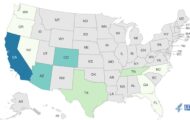These are the top 10 food stories of 2016. We chose them based on the impact they had on the food world and on the people who were sickened in outbreaks, and on how they changed how we look at our food supply. Many of these outbreaks were uncovered by the PulseNet system, a national database of food poisoning illnesses.

All of these outbreaks serve as a reminder that everyone needs to be careful about the foods they eat, about where they eat foods, and the importance of thorough handwashing. And this list is a reminder that food companies need to be held accountable when the foods they produce make people sick.
10. Petting Zoo Outbreaks
Petting zoo outbreaks became common a few years ago, when a huge outbreak sickened more than 100 people at the Cleveland County Fair in North Carolina. In 2016, the National Zoo was put under quarantine after some of its animals were diagnosed with E. coli infections. An E. coli outbreak was associated with the Cider Mill Ciderfest in Louisburg, Kansas in October 2016 sickened at least seven people. An E. coli outbreak at the Washington County, Oregon fair in August 2016 sickened several people. And school trips to a farm in Litchfield, Minnesota in May 2016 sickened at least 10 children with Cryptosporidium infections. In April 2016, an E. coli outbreak linked to the Oak Leaf Dairy Farm in Lebanon, Connecticut sickened at least 41 people.
And in November, 2016, the law firm Pritzker Hageman, which underwrites Food Poisoning Bulletin, won a $7.55 million judgement for a child who contracted an E. coli infection in 2013 at Dehn’s Pumpkins in Dayton, Minnesota. The child developed hemolytic uremic syndrome and suffered severe kidney damage. Children were allowed to pet and feed cows on the property.
9. CRF Uncooperative with FDA
Vegetables produced by CRF Frozen Foods were linked to a multistate Listeria outbreak that sickened at least eight people in 2016. Documents showed that before the outbreak was discovered, the company was reluctant to cooperate with inspectors from the FDA. They were told that legal sanctions may be imposed if the firm did not correct serious deficiencies. Two people died in this outbreak, although the Centers for Disease Control and Prevention does not consider listeriosis as a cause of death for either person.
During a March 14, 2016 inspection of the Pasco, Washington facility, CRF did not allow the FDA to take pictures and would not provide interstate commerce documents for the purchase of onions to FDA inspectors. A number of food safety issues were found at the plant.
8. Sproutbreaks
Raw sprouts are not a food most people should eat. Anyone who is in a high risk group should never eat them. There were three major food poisoning outbreaks linked to raw sprouts in 2016.
In early 2016, an E. coli outbreak was linked to alfalfa sprouts produced by Jack & the Green Sprouts. Eleven people in two states were sickened in that outbreak.
In April, 2016, another sproutbreak was linked to Sweetwater Farms. At least 26 people in 12 states were sickened in that outbreak with Salmonella Muenchen and Salmonella Kentucky. Officials found that the seeds were contaminated and other sprouts growers also produced the sprouts.
In the summer of 2016, at least 36 people in 9 states were sickened in a Salmonella Reading and Salmonella Albony by sprouts produced by Sprouts Extraordinaire of Denver, Colorado.
And in March 2016, the FDA and the U.S. Department of Justice blocked the sale of Henry’s Farm bean sprouts because inspections revealed the presence of Listeria monocytogenes bacteria at the plant, along with multiple food safety violations.
7. Food Company Officials Sentenced
The year 2016 was the year the food company executives were fined and actually sentenced to jail for selling contaminated foods.
The owner of Oasis Brands, which distributed contaminated cheese associated with a Listeria outbreak in 2014, was sent to prison in November 2016. ConAgra Grocery Products, a subsidiary of ConAgra Foods, pled guilty to a criminal misdemeanor charge in December 2016 imposed over a massive Salmonella outbreak in 2006 that was linked to its peanut butter. And Roos Foods pled guilty to a misdemeanor violation of the Food, Drug & Cosmetic Act in January 2016 after a deadly Listeria outbreak in 2014 was linked to their cheese products.
6. Secondary Recalls
Secondary recalls were a big deal in 2016. When a food manufacturer who produces ingredients for other manufacturers has to recall a product for bacterial contamination, a ripple effect occurs.
The CRF Frozen Foods outbreak and subsequent recall led to 22 secondary recalls of mixed vegetables, tamales, and frozen vegetables that were sold under many brand names.
At least 24 products that were made with dry milk from Valley Milk Products were recalled late in the year. Dry milk was recalled for potential Salmonella contamination after the feds raided the Valley Milk facility in Virginia and seized more than 4,000,000 pounds of product.
Ice cream and ice cream products were recalled for possible Listeria monocytogenes contamination in late 2016 after the pathogenic bacteria was found at Dr. Bob’s of Upland. At least 15 secondary recalls were issued.
And in the summer, many secondary recalls were issued after the E. coli outbreak linked to General Mills flour was announced.
5. Blue Bell Listeria Monocytogenes
After the deadly Listeria monocytogenes outbreak linked to Blue Bell ice cream products in 2015, the company made the news frequently. First, Blue Bell announced that it found Listeria monocytogenes bacteria in its Texas pant in January. There was confusion over this announcement, especially since the company retracted its statement the next day and said, “in our facilities, we have identified suspected areas where bacteria may be present but in no case have we confirmed Listeria monocytogenes. The entire purpose of our enhanced environmental testing is to identify locations where bacteria could be found in our facility in order to properly clean and sanitize the surface and prevent contamination.”
This company is also under investigation by the Justice Department over the outbreak that killed three people. Problems discovered at the plant included condensation dripping directly into ice cream, and unsanitary equipment and practices.
Then in December 2016, the company announced that, after implementing a strict program to control Listeria and ensure a safe product, they wanted to return to the more lax standards followed by other ice cream facilities.
4. Raw Milk Outbreaks
Raw milk continued to be an issue in 2016. There were quite a few recalls of raw milk and raw milk products for bacterial contamination, and there were six confirmed outbreaks.
In December, a Campylobacter outbreak was linked to Sweet Grass Dairy raw milk. That facility is located in Fredericktown, Ohio. The milk was purchased by consumers through a herd share program to evade the ban on raw milk sales in that state.
A Campylobacter outbreak in September sickened at least 20 people in Pueblo County, Colorado. Those sickened reported drinking raw milk from Larga Vista Ranch in Pueblo County.
In New Mexico in September, a Cryptosporidium outbreak was associated with raw milk. At least six people were sickened in that outbreak.
In August 2016, a Salmonella outbreak linked to Heber Valley raw milk in Utah sickened at least nine people. Two of those people were hospitalized because their illnesses were so serious.
In February, 2016, an E. coli outbreak linked to recalled Organic Pastures raw milk sickened six children. That dairy is located in California.
A deadly Listeria monocytogenes outbreak in March linked to raw milk produced by Miller’s Organic Farm in Bird in Hand, Pennsylvania was discovered in January 2016. Listeria was found in the raw milk that month. The PulseNet system was used to identify patients who were part of that outbreak.
3. General Mill Flour E. coli Outbreak
From December 2015 to September 2016, at least 63 people in 24 states were sickened with E. coli infections after eating products made with General Mills flour. Seventeen people were hospitalized, and one person developed hemolytic uremic syndrome (HUS).
The FDA found that flour made at the company’s Kansas City, Missouri facility was the likely source of the bacteria in this outbreak. General Mills recalled several types of its flour, which triggered many secondary recalls.
This outbreak was a good reminder not to eat raw dough or batter. The median age in this outbreak was 18, most likely because teenagers and children like to eat raw cookie dough. Flour is a raw agricultural product and should be considered as potentially hazardous as raw meat.
2. Dole Salads Listeria Monocytogenes Outbreak
The Listeria monocytogenes outbreak linked to recalled Dole packaged salads sickened 19 people in 9 states and killed one person in Michigan. Fourteen people were sickened in Canada. And Food Poisoning Bulletin broke the story that Dole knew about contamination in its Springfield, Ohio plant years before the outbreak was discovered.
The company found the pathogenic bacteria in their facility in early 2014. The records we received as part of a Freedom of Information Act Report states that a 2012 FDA inspection was triggered by a recall for Listeria. The Dole plant was constructed poorly and it could not be kept clean. Once Listeria finds its way into a plant, especially one that uses a lot of water, it can be very difficult to eradicate.
The Justice Department launched an investigation into the outbreak in April 2016. No more information has been released about this investigation to date.
1. Hepatitis A Outbreaks
There were two huge hepatitis A outbreaks in 2016. The first was linked to frozen imported strawberries used in Tropical Smoothie Cafe products, and the second to imported frozen scallops served at a restaurant in Hawaii.
The hepatitis A outbreak linked to strawberries used in Tropical Smoothie Cafe products finally ended in December 2016 after sickening 143 people in 9 states. FDA investigations found that the frozen fruit was imported from Egypt by the International Company for Agricultural Products and Processing. The virus was found in multiple samples of those strawberries.
The hepatitis A outbreak in Hawaii sickened 291 people from June through October 2016. Investigators found that the product responsible for that outbreak was Sea Port Bay Scallops imported from the Philippines, distributed by Koha Oriental Foods, and served at Genki Suchi restaurants on Oahu and Kauai. The scallops were served raw. Several businesses also reported that some of their employees developed the infection, which may have exposed other people to the virus.




